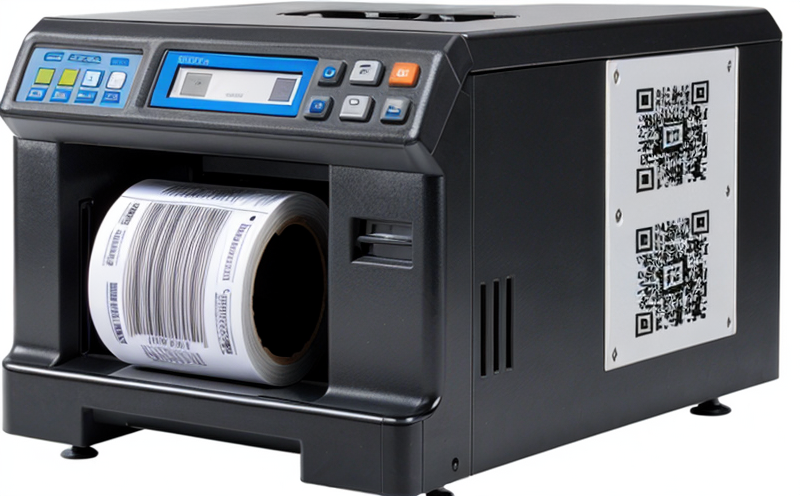GS1 Composite Barcode Verification Test
The GS1 Composite Barcode Verification Test is a critical component in ensuring that barcodes used within supply chain management and point-of-sale systems are accurate, readable, and compliant with international standards. This test ensures that the barcode contains all necessary elements required for successful data transmission during scanning processes.
Barcodes are essential tools for identifying products, tracking inventory, and managing logistics efficiently. However, improper design or printing can lead to reading errors which may result in significant operational disruptions. The GS1 Composite Barcode Verification Test aims to eliminate these risks by providing a rigorous examination of the barcode's components including symbology, print quality, quiet zones, and human-readable text.
The test is particularly important for industries such as retail, pharmaceuticals, food & beverages, and manufacturing where accurate data capture is crucial. Compliance with global standards like ISO/IEC 15436 ensures reliability across different environments and devices. In this service, we employ advanced technologies to simulate real-world conditions under which barcodes will be used.
Our process involves several stages: initial inspection of the barcode design, printing quality assessment using high-resolution scanners, evaluation of symbology accuracy against predefined specifications, verification of human-readable text legibility, and finally, determination of overall compliance based on industry best practices. Each step ensures that every detail meets stringent requirements set forth by GS1.
One key aspect of this service is the use of ISO/IEC 15436 which specifies the dimensions and format for composite barcodes used in EAN/UCC systems. Compliance with these standards guarantees interoperability between various hardware and software platforms worldwide. By adhering strictly to these guidelines, we ensure that your barcodes will function correctly across all intended applications.
Another important factor is ensuring correct symbology selection. Depending on the type of product being identified, different types of barcodes may be more appropriate. For instance, linear codes are best suited for short alphanumeric strings while two-dimensional (2D) barcodes can encode larger amounts of information in a smaller space.
Quiet zones play another crucial role as they provide clear areas around the barcode that prevent interference from surrounding elements during scanning processes. These quiet zones must be free from any marks or imperfections which could affect reading accuracy.
In summary, performing a GS1 Composite Barcode Verification Test is not just about checking whether a single element meets certain criteria but rather ensuring that all components work together seamlessly to deliver reliable performance every time they are scanned.
Benefits
The GS1 Composite Barcode Verification Test offers numerous advantages for businesses operating in various sectors. By conducting this test, companies can ensure their barcodes meet international standards, thereby enhancing customer satisfaction and reducing operational costs associated with misreads or failed scans.
- Promotes brand integrity: Consistent quality across all products helps maintain consumer trust.
- Reduces errors: Accurate data capture minimizes discrepancies in inventory management.
- Avoids penalties: Compliance with GS1 standards can prevent fines from regulatory bodies.
Additionally, this service supports continuous improvement initiatives by identifying areas for enhancement and providing actionable insights. It also helps organizations stay ahead of evolving trends and technologies within the industry.
Industry Applications
| Industry Sector | Description |
|---|---|
| Retail | In retail, accurate barcodes are vital for efficient stock management and seamless checkout processes. |
| Pharmaceuticals | Ensuring proper labeling is crucial to prevent medication mix-ups and ensure patient safety. |
| Food & Beverages | Avoiding spoilage by accurately tracking products throughout the supply chain improves freshness and quality control. |
| Manufacturing | Streamlining production lines through precise identification of parts reduces waste and increases productivity. |
The GS1 Composite Barcode Verification Test is particularly beneficial in these industries due to the critical nature of barcode accuracy. It helps maintain consistency, improves efficiency, and ensures regulatory compliance.
Use Cases and Application Examples
| Use Case | Description |
|---|---|
| Retail Checkout | Efficiently process sales transactions by ensuring accurate barcode reading. |
| Inbound and Outbound Logistics | Avoid delays in shipping or receiving products by verifying that barcodes can be read at all points along the supply chain. |
| Inventory Management | Accurate inventory levels lead to better stock control and reduced overstock situations. |
- Pharmaceutical Packaging: Verify that each vial or bottle has a unique barcode for traceability throughout the distribution chain.
- Food Safety: Ensure that every product label contains accurate information to prevent recalls and protect public health.
- Manufacturing Quality Control: Use barcodes to track production batches, ensuring each unit meets quality standards before it reaches consumers.
These examples illustrate how the GS1 Composite Barcode Verification Test plays a vital role in various stages of product lifecycle management. Accurate barcoding contributes significantly towards improving operational efficiency and enhancing customer experience.





